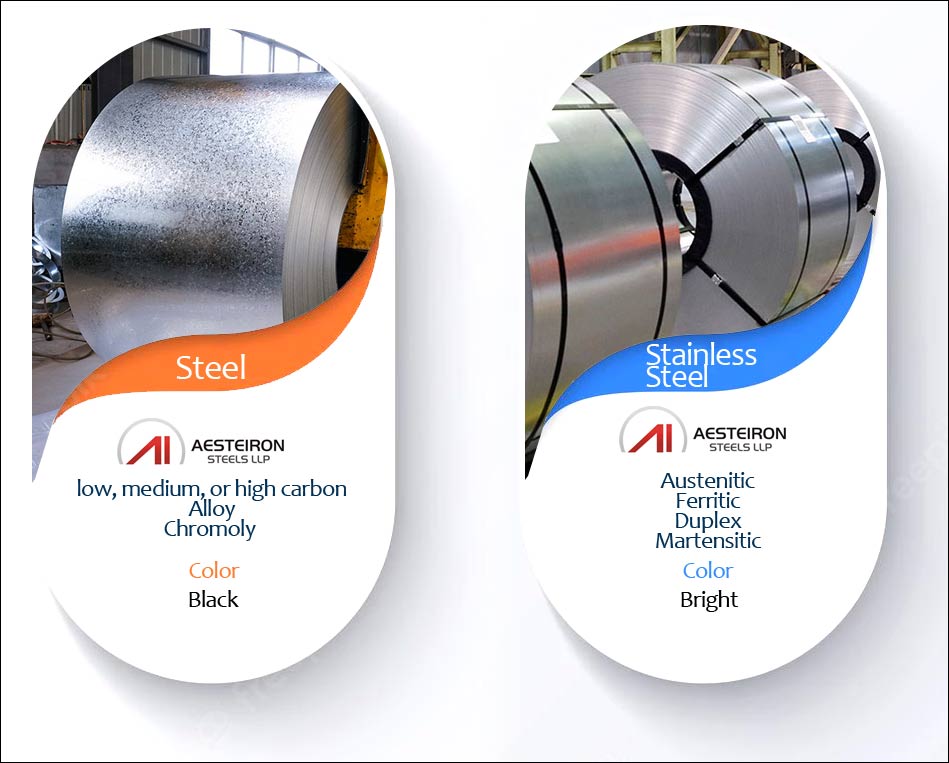Difference between stainless steel and steel
Do you want to understand the difference between stainless steel and regular steel? If you're trying to decide which material is best for your project, it's important to know how they differ in terms of composition, performance, and appearance. Here’s a detailed breakdown to help you make an informed choice.

**Introduction**
Stainless steel and regular steel are both metal alloys made primarily from iron, but they have different properties due to the elements added during production. While both are widely used in various industries, their applications and characteristics set them apart. Understanding these differences can help you choose the right material for your needs.
**Key Differences Between Stainless Steel and Steel**
1. **Cost and Appearance**
Steel is generally more affordable, making it a popular choice for many construction and manufacturing projects. On the other hand, stainless steel has a sleek, shiny finish and is less reactive, which makes it ideal for environments where aesthetics and durability matter.
2. **Properties**
Steel is magnetic and comes in three main types based on carbon content: low, medium, and high. It conducts heat well, making it suitable for applications that require even temperature distribution.
Stainless steel is usually non-magnetic (with some exceptions), harder than regular steel, and less ductile. It has lower thermal conductivity, which means it doesn’t distribute heat as evenly as steel.
3. **Aesthetics**
Stainless steel has a luxurious, polished look with a natural shine that gives a modern, clean appearance.
Steel, by contrast, typically has a matte finish and appears more industrial or utilitarian.
4. **Chemical Composition**
Steel is made by combining iron with carbon and removing impurities like sulfur and phosphorus. This process increases its strength and hardness.
Stainless steel follows a similar production method but includes additional elements such as chromium, nickel, nitrogen, and molybdenum. The key ingredient is chromium—stainless steel must contain at least 10.5% chromium to be classified as such. Chromium reacts with oxygen to form a protective oxide layer, which prevents rust and helps the material self-heal if scratched.
5. **Maintenance and Self-Healing Properties**
Stainless steel requires minimal maintenance thanks to its passive oxide layer. This layer helps prevent corrosion and even repairs minor damage over time. However, it’s not completely immune to staining or rust, especially in harsh environments. Regular cleaning with mild soap or a soft brush can keep it looking great.
Steel, on the other hand, lacks this protective layer and is more prone to rust unless coated or treated. It requires more frequent maintenance to prevent corrosion.
6. **Corrosion Resistance**
Stainless steel is highly resistant to corrosion, though it can still rust under certain conditions. Its resistance depends largely on the chromium content—higher levels offer better protection.
Steel has a natural passive layer formed by oxidation, which offers some corrosion resistance. However, this layer is not as durable or long-lasting as that of stainless steel.
**Conclusion**
In summary, stainless steel offers superior corrosion resistance and a more attractive appearance, making it ideal for applications where durability and looks are important. Regular steel is more cost-effective but is more susceptible to rust and wear. Choosing between the two depends on your specific needs, budget, and environmental conditions. Whether you're building something long-lasting or just looking for a practical solution, understanding these differences will help you make the best decision.
Injection Molding Service,Aerospace Connector,Connectors Injection Molding,Electric Tools Plastic Part
Wisegroup Precison Mold Ltd , https://www.wisegroupasia.com
